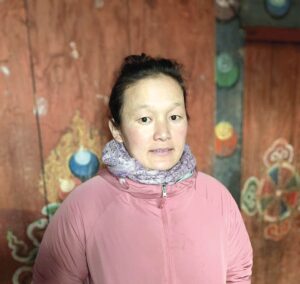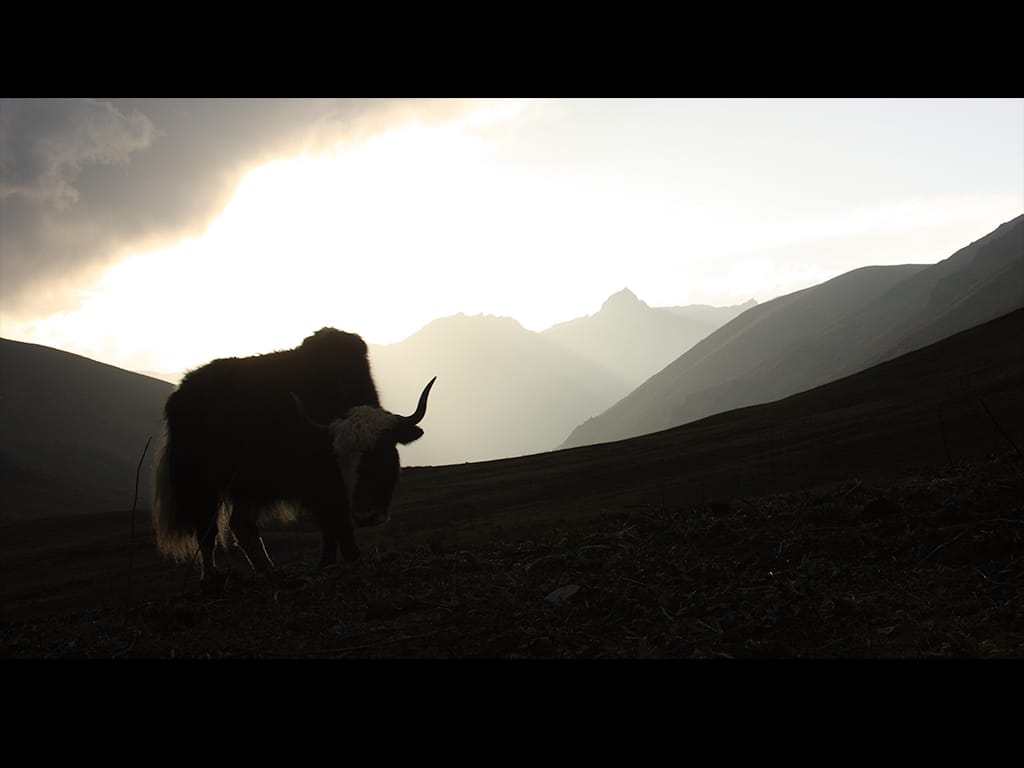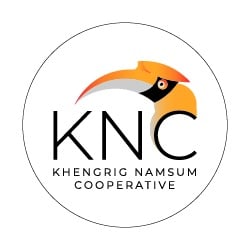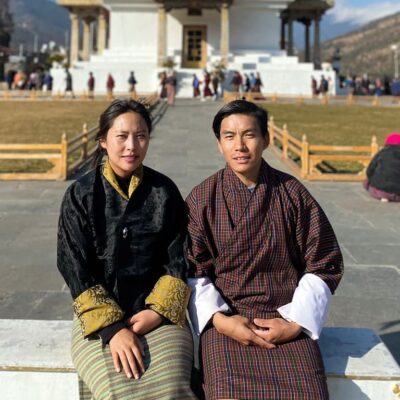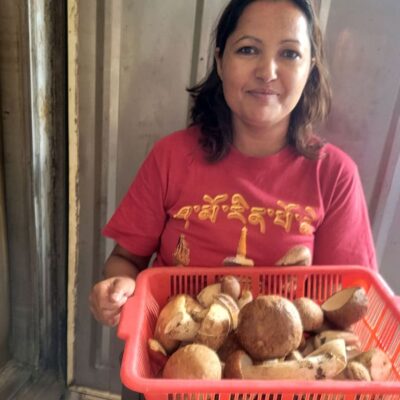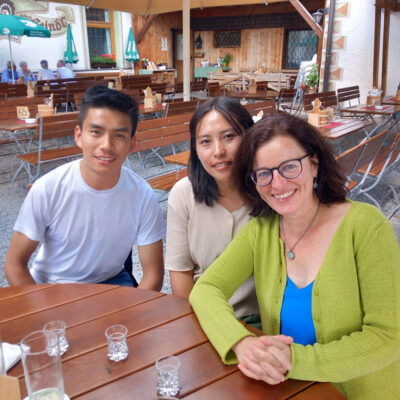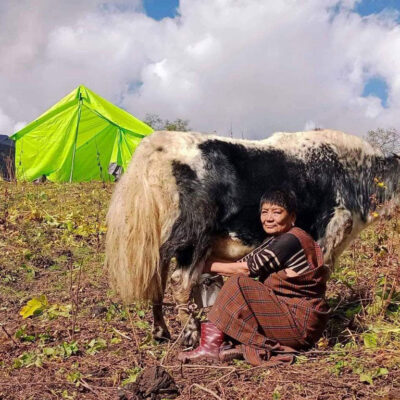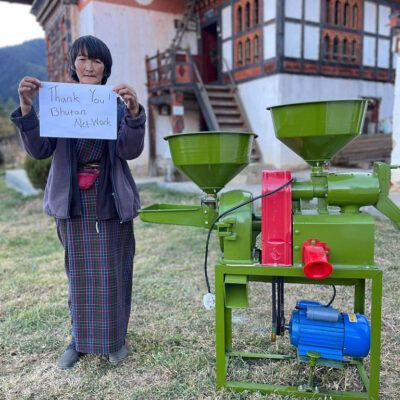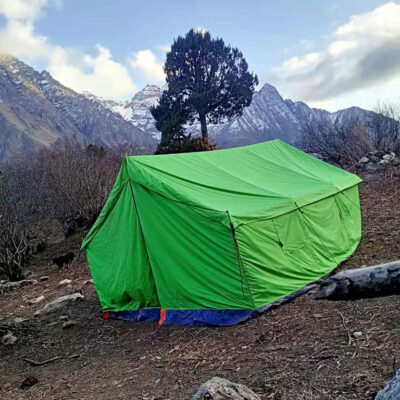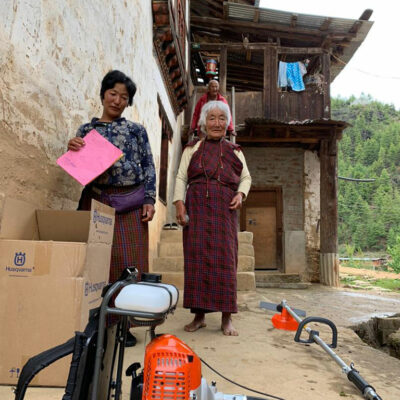This post is also available in: Deutsch (German)
Am Chencho Lham at Tsophu
by Dorji Bidha, Drukgyel Farmers
Last summer Am Ania from Poland and I went on the Jomolhari trek, and on our third day we met Am Chencho on our way to Tsophu. It was summer and pouring on us, and we were drenched from the rain. As soon as Am saw us, she welcomed us with several cups of milk tea. Although she has her children helping her with chores and raising yaks during vacation, she’s all by herself most of the time.
Am Chencho happily offered us lunch, but we politely denied since we just had our breakfast a short while before. Like every year, Am Chencho stayed in her temporary summer shelter in an ill-equipped tent. Strong and harsh winds blow hard through her camping ground. I mentioned the Bhutan Network to her and she immediately knew of it, since Bhutan Network has helped several highlanders in the Himalayan region. I promised her that Bhutan Network could help her too and that I could request them to help her with a tent and a power bank. She told me that even if it took ages she could wait, since she had heard from friends who had received the support of a tent, a stove, a power bank, and LPG gas. It had hugely impacted the livelihoods of these nomads.
Since it’s extremely cold during dry winter days, Am Chencho wakes up around 7 AM and takes her first cup of tea. After half an hour, she prepares her calf feed in hot water and adds fodder. The yak herders always take extra care of the calves since they can’t survive in the extreme cold. After that she milks the dri, as the female milking yak is called. Bulls are generally called yak with some local variations depending on local dialects. Am Chencho, for example calls her female yak jim and the male one joli. The milk yield in winter is comparatively less than in summer because there is no fresh green grass. Later, around 9am, she takes her yaks near the ridge and returns home to do household chores. First she prepares her breakfast and then fetches water, and at the same time she collects all the yak dung and piles it near her house.
Today Aum Chencho has 70 yaks and most of the time can be found wandering around the high mountains looking for pasture for her yaks and staying in temporary shelters. The biggest challenge for her is not having access to running water or electricity. If she could have access to solar panels, with its clean energy, it would be a great help. She gets enough sunlight high in the mountains, and this would help her a lot. She recently received help from Bhutan Network and she’s very much excited since the tent is portable and convenient to pitch where ever there is a cordycep spot. Before, she used to drag logs, poles, and plastic to pitch a tent. This took a lot of hard work and was greatly inconvenient. Another challenge for her is losing yaks to snow leopards during cold and dry spring days.
Compared to earlier days, life has completely changed for Am Chencho and her family. Today they have electricity and running water at their permanent one storied house, and she is more comfortable and happier than before. With the recent trend of Australian exodus, some children from the highlands have also gone abroad. Therefore, Am Chencho is not certain about whether her children will be willing to stay back, herding yaks and looking after their household. However, if organizations like Bhutan Network can aid her then I see a future for the youth in the mighty Himalayan mountains.


